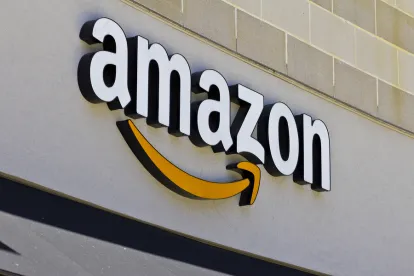As part of Amazon’s commitment to responsible sourcing, Amazon has posted its chemicals policy, which includes its first Restricted Substance List (RSL). Amazon states that it defines chemicals of concern as those chemicals that: (1) meet the criteria for classification as a carcinogen, mutagen, reproductive, or other systemic toxicant; or (2) are persistent, bioaccumulative, and toxic. Amazon “strategically prioritize[s] which chemicals of concern to focus on based on product type, customer concerns, and the availability of safer alternatives.” The baseline list of chemicals of concern included on the RSL are those chemicals that Amazon seeks to avoid in Amazon-owned Private Brand Baby, Household Cleaning, Personal Care, and Beauty products in the U.S. According to Amazon, it will expand the policy to additional brands, product categories, and geographies over time.
Policy
Amazon’s Chemical Policy includes the following actions:
-
Reduce Usage of Chemicals of Concern: Amazon encourages manufacturers to phase out potentially hazardous chemistries and adopt green chemistry alternatives, such as those defined in the U.S. Environmental Protection Agency’s (EPA) Safer Choice Safer Chemical Ingredients List, “which can reduce impacts to human health and the environment.” Amazon states that it began its reformulation efforts towards this goal with Private Brand formulated products because it has the most control over how these products are developed; and
-
Enable Transparency: According to Amazon, its transparency efforts are “grounded in the belief that Amazon should provide customers with information that helps them make informed purchasing decisions.” Amazon’s goal is to make product health and sustainability data as easy for customers to access and interpret as price and customer reviews. Amazon states that this is why it is working on website features that will make it easier for customers to access comprehensive information about product ingredients and third-party certifications, including Safer Choice, Made Safe, Green Seal, and Cradle to Cradle. Amazon “hope[s] that making this information more readily available for customers will encourage additional brands to move away from potentially hazardous chemistries in their products and adopt safer chemistries.
Current Initiatives
Amazon’s current initiatives include implementing its first RSL, enhancing transparency with customers and stakeholders, promoting third-party certifications, and joining retail sector safer chemistry initiatives. The RSL will apply to all consumer Private Brand Baby (shampoo and lotion, wipes), Household Cleaning (all-purpose, kitchen, and bathroom cleaners), Personal Care (shampoo, sanitizers, and moisturizers), and Beauty Products (make-up). Amazon states that the RSL “is based on the leading science and customer feedback, and includes a baseline list of chemicals of concern that all brands should work to phase out and eliminate.” In particular, Amazon notes, the RSL focuses on paraben preservatives, formaldehyde donor preservatives, phthalate solvents, nonylphenol (NP) and nonylphenol ethoxylate (NPE) surfactants, toluene, and triclosan. Amazon will review the set of RSL chemicals and update them periodically. According to Amazon, its brands “have and will continue to develop even more restrictive RSLs for their businesses.” Amazon states that it has developed mechanisms to drive product formulation improvements and policy compliance with its suppliers.
Amazon notes that recent changes to its website include Amazon Pages, providing brands an opportunity to tell their story directly to customers, and the A+ Enhanced Marketing Content on detail pages, allowing brands to explain product features and benefits to customers. According to Amazon, this information can include “the steps they are taking to ensure that their product selection is safe and healthy, with the backing of a robust set of guidelines to maintain a high-bar of content quality to only include factual, easily verifiable, and objective information.” To provide additional information on physical packaging, Amazon states that it developed 2D codes through its transparency service that are “retailer agnostic” and available to all brands. These codes can link to information about the products, their product supply chains, and any third-party certifications they have received.
To further its commitment to transparency, Amazon states that in 2019, it will continue to work on additional product category RSLs under this Chemicals Policy, and work to achieve fuller ingredient disclosure on its Private Brand product detail pages.
Amazon is working on features intended to make it easier for customers to discover, identify, and purchase products with safer formulations and sustainable attributes. This work will include making safer chemistry third-party product sustainability certifications such as Safer Choice, Made Safe, Green Seal, and Cradle to Cradle more prominent. Amazon has joined the Retail Leadership Council of the Green Chemistry and Commerce Council (GC3) and the Beauty and Personal Care Products Sustainability Project (BPC). Amazon states that it “supports the retail sector’s collaborative effort to encourage national brands to use safer formulations and produce more sustainable products.”
Commentary
Amazon’s entry into this space is not surprising given its market influence and profile, but certainly complicates matters for commercial entities. The growing number of disparate policies and approaches to product formulation, ingredient communication, and “restricted substances” places enhanced pressure on product manufacturers to be ever mindful of the formulation and product composition choices being made by themselves and by entities within their supply chains. As laudable as these policies are, one wonders how they align with the role EPA and other federal agencies have with respect to product review/approval and safety. Consumers may well be asking the same question. The hope is Amazon and other influential retailers work closely with EPA and other stakeholders to ensure the messaging is clear and informative. Achieving less invites significant confusion among consumer audiences.


 />i
/>i

